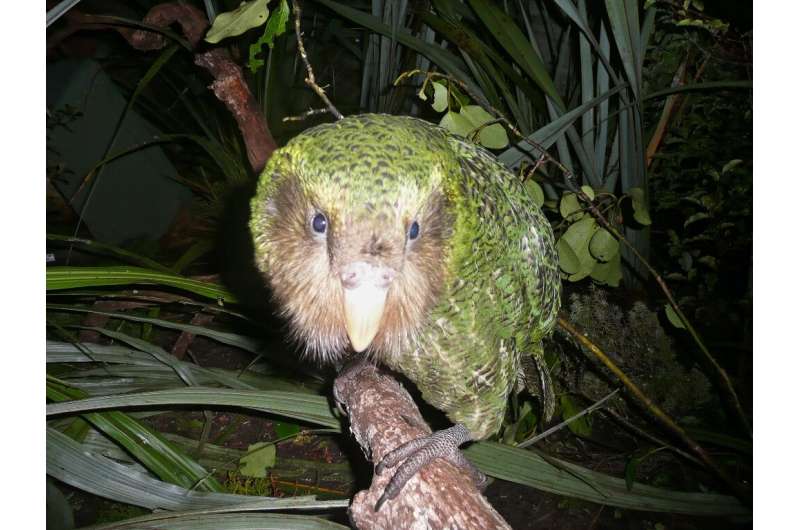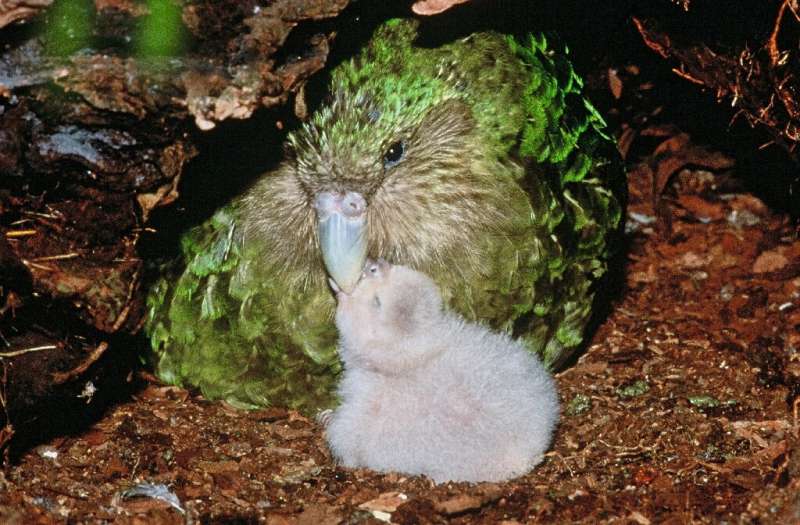Parrot world's endangered heavyweight faces new threat

An unprecedented disease outbreak has pushed the critically endangered kakapo, the world's fattest parrot, closer to extinction, New Zealand scientists said Thursday.
One of the last kakapo populations on remote Codfish Island has been hit with a fungal respiratory disease called aspergillosis, the Department of Conservation (DOC) said.
It said 36 of the parrots were receiving treatment and seven had died, including two adults—a huge loss for a species which has less than 150 fully grown birds left.
"Aspergillosis is having a devastating impact on kakapo," the DOC said in a statement Thursday.
The setback comes just weeks after scientists hailed a bumper breeding season for the flightless, nocturnal bird, which was once thought to be extinct.
An intense, decades-long conservation effort has seen kakapo numbers slowly rise from a low of about 50 in 1990, and earlier this year there was hope the species was turning the corner.
The breeding programme resulted in 249 eggs laid, fuelling expectations at least 75 chicks would survive the year, more than double the previous record.
But Auckland Zoo veterinarian James Chatterton said efforts were now focussed on saving the birds infected by aspergillosis, which before this year was known to have killed just one kakapo.

"It's an unprecedented threat and we're working really hard to understand why it's happened this year," he told TVNZ.
"Our working theory at the moment is that it's this year's climate—it's been a really warm year down south."
The hypothesis is that the warm weather and crowded breeding nests on Codfish Island have led to an abundance of aspergillosis spores.
The plump, green kakapo—the name means "night parrot" in Maori—was once so common an early European explorer said they could be shaken from the trees like apples.
Numbers fell as introduced pests such as stoats, cats and dogs hunted the ground-dwelling birds, which can weight up to four kilograms (nine pounds).
Their slow breeding further harmed the kakapo's chances of survival, as they only mate every two to four years when New Zealand's native rimu trees are full of fruit.
© 2019 AFP



















